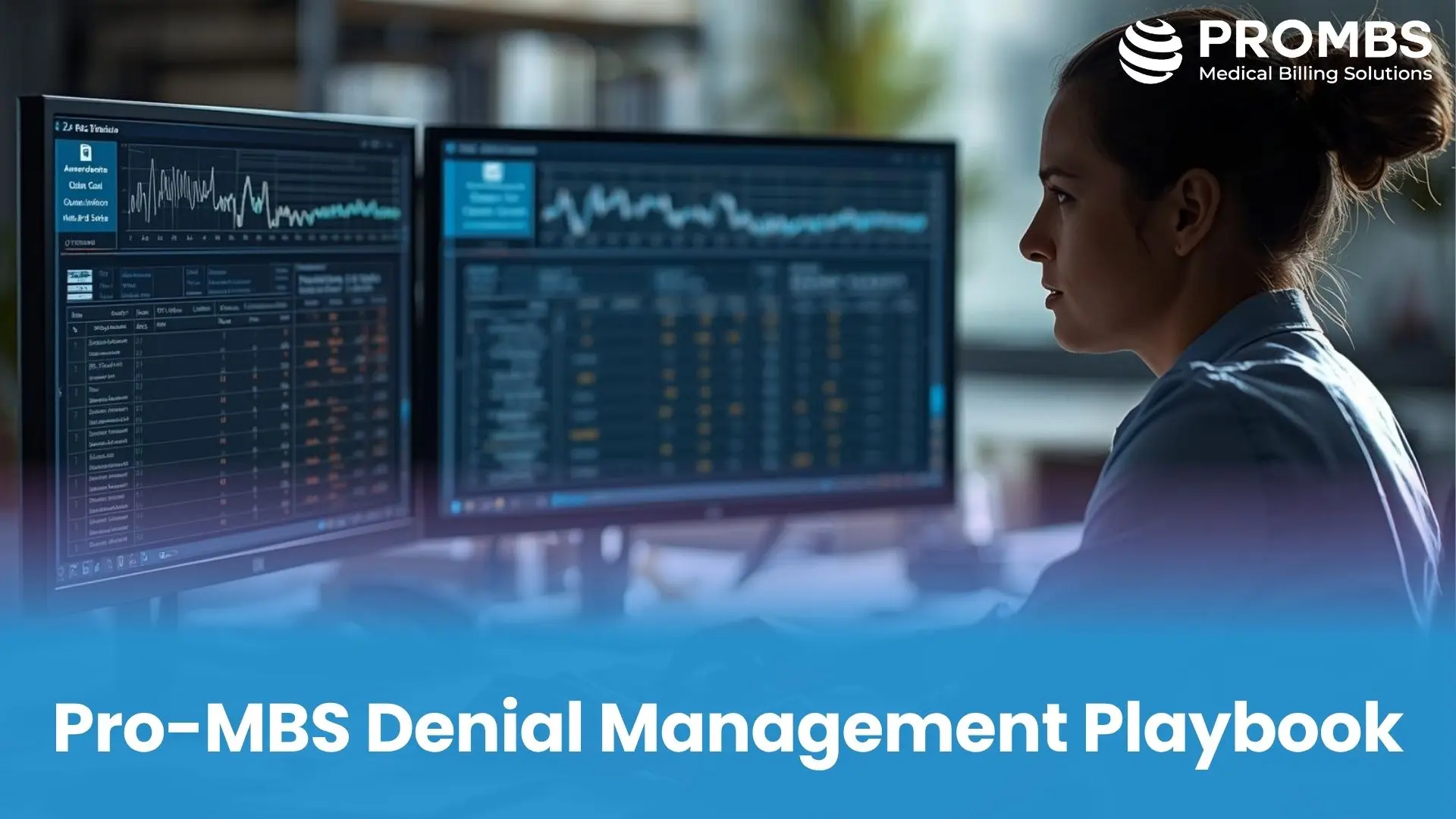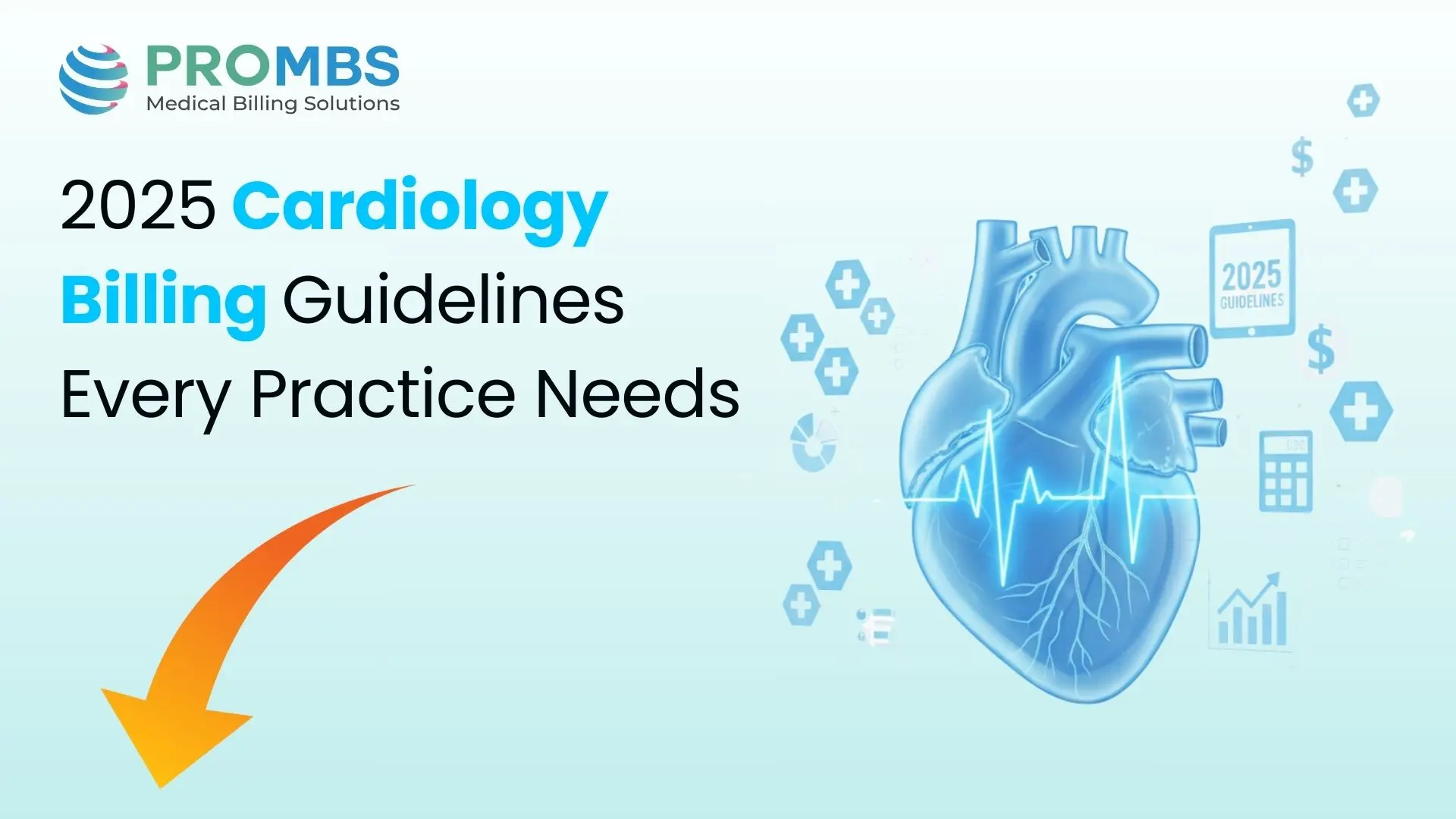In the current reimbursement climate, payer denials are not an occasional nuisance, they are a structural threat to healthcare organizations. The American Hospital Association (AHA) reports that hospitals lose billions annually to denied and underpaid claims, with denial rates climbing more than 20% since 2016. Left unchecked, these denials erode margins, inflate AR days, and weaken compliance. At PROMBS, we have built a Denial Management Framework that goes beyond firefighting. Our approach blends prevention, rapid resolution, and compliance oversight, ensuring that denials not only get overturned but also stop recurring. This blog details our denial management best practices, showing why PROMBS delivers unmatched revenue protection and brand credibility for providers.
Root-Cause Identification
The foundation of denial management best practices lies in recognizing that denials are not random payer obstacles, they are predictable outcomes of broken workflows. According to the Healthcare Financial Management Association (HFMA), more than 60% of claim denials are avoidable when providers invest in root-cause tracking. PROMBS treats every denial not as an isolated event but as a data point in a larger compliance puzzle, using analytics dashboards and denial intelligence to pinpoint why claims fail in the first place.
| Root-Cause Category | Common Example | PROMBS Preventive Action |
|---|---|---|
| Eligibility Errors | Patient coverage inactive on date of service, as noted in CMS eligibility rules. | PROMBS automates eligibility verification during intake, preventing invalid submissions. |
| Coding Inaccuracy | CPT and ICD-10 mismatch, e.g., billing CPT 72141 (MRI cervical spine) without supportive ICD-10, violating AMA CPT guidelines. | Dual-layer coding QA with ICD-10/CPT crosswalk validation. |
| Medical Necessity Gaps | Denial of imaging because clinical notes don’t meet CMS LCD medical necessity criteria. | PROMBS links CPTs to chart documentation before submission. |
| Authorization Deficiencies | Procedure denied for missing pre-authorization, flagged by payer portals. | PROMBS integrates prior auth checks directly into claim workflows. |
| Payer Edit Logic | ED visit bundled with laceration repair under CO-97 edits. | PROMBS applies its payer edit libraries to flag misapplied bundling. |
Why Root-Cause Tracking Matters
Denials that are “worked” without root-cause tracking simply resurface later. For instance, if imaging claims keep getting denied for lack of medical necessity documentation, resubmitting them individually won’t solve the systemic issue, the provider must strengthen charting standards upfront. PROMBS integrates denial intelligence into feedback loops, so each denial becomes a learning opportunity that strengthens future workflows. Over time, this transforms denial management from a reactive process into a preventive compliance strategy that continuously lowers denial rates.
Did You Know? The Government Accountability Office (GAO) found that nearly 1 in 5 claims are denied for reasons directly traceable to front-end workflow issues such as eligibility errors or missing documentation. By embedding denial root-cause analytics, PROMBS reduces these denials before they ever hit payer adjudication.
Pre-Submission Edits
One of the most effective ways to apply denial management best practices is to prevent errors before the claim even leaves the provider’s system. The Centers for Medicare & Medicaid Services (CMS) has emphasized that clean claim rates rise significantly when claims are scrubbed against payer edits prior to submission. PROMBS integrates payer-specific edit libraries, contract modeling, and compliance-driven rules into its pre-submission workflows, ensuring claims are scrubbed and validated for both technical accuracy and medical necessity before they ever reach a clearinghouse.
| Category | Common Example | PROMBS Prevention Strategy |
|---|---|---|
| Bundling Logic | E/M visit with minor surgery denied unless modifier 25 applied, per AMA CPT guidance. | PROMBS scrubs for bundling edits and confirms contract carve-outs. |
| Medical Necessity | Denial of lab test if billed outside LCD coverage rules, guided by CMS LCDs. | PROMBS validates diagnosis codes against payer LCD/NCD criteria. |
| POS Accuracy | Telehealth claim denied if billed with POS 11 instead of POS 10, as clarified in CMS Telehealth Billing Guidance. | PROMBS applies internal POS 10 Telehealth Guide. |
| COB Sequencing | Secondary claim submitted before primary in violation of NAIC COB rules. | PROMBS verifies payer sequencing automatically before submission. |
| Frequency/Unit Limits | Denial of CPT 85025 (CBC) repeated within restricted timeframe per CMS NCCI edits. | PROMBS tracks frequency rules to ensure billing compliance. |
Why Pre-Submission Scrubbing Matters
Without pre-submission edits, providers rely on payers to detect claim errors, which almost always leads to denials, AR delays, and rework. For example, a telehealth claim billed with the wrong POS may be denied outright, requiring resubmission and delaying reimbursement by 30–45 days. PROMBS ensures that denials like these are intercepted before submission by embedding payer edit logic into the claim cycle itself. This means every claim is scrubbed against payer-specific rules, not generic clearinghouse edits, resulting in far fewer downstream denials and higher first-pass success.
Did You Know? The Medical Group Management Association (MGMA) reports that providers who implement robust pre-submission scrubbing improve first-pass clean claim rates by 15–20%. PROMBS leverages these edits to consistently achieve a 98.9% first-pass success rate across its clients.
Specialized AR Team
Even with the strongest prevention measures, some denials are inevitable, but the difference lies in how fast and effectively they are resolved. Many providers lose millions because their staff treat denials as routine back-office tasks instead of specialized compliance cases. According to Becker’s Hospital Review, as many as 65% of denied claims are never resubmitted, meaning lost revenue that could have been recovered with an expert team. PROMBS closes this gap with a specialized AR denial management team trained in payer policies, appeals processes, and compliance safeguards.
| Denial Category | Common Example | PROMBS Resolution Approach |
|---|---|---|
| Eligibility Denials | Claim rejected for inactive insurance coverage at date of service, flagged per CMS eligibility standards. | Team re-verifies coverage, updates COB details, and resubmits. |
| Coding Denials | Modifier 25 omitted for E/M visit with minor procedure, per AMA CPT guidance. | Corrected using PROMBS’ Mastering Modifiers Guide. |
| Authorization Denials | Procedure denied for missing pre-authorization. | AR specialists request retro-auth documentation or negotiate payer exceptions. |
| Medical Necessity Denials | MRI denied because documentation did not meet CMS LCD medical necessity criteria. | Specialists attach supporting chart notes and appeal under LCD policy. |
| Timely Filing Denials | Claim denied as late submission. | PROMBS provides proof of timely submission using clearinghouse reports. |
Why a Specialized Team Improves Denial Outcomes
Unlike general AR staff who balance billing, collections, and denials, PROMBS’ specialists work only on denials, giving them deeper knowledge of payer trends and compliance requirements. This specialization ensures denials are worked within days, not weeks, protecting cash flow and meeting payer deadlines. Moreover, the team’s ability to cite CMS rules, payer contracts, and AMA coding guidance in appeals dramatically increases overturn rates. With this focus, PROMBS ensures that no denial is “written off” without a compliance-driven fight.
Did You Know? The Medical Group Management Association (MGMA) has shown that organizations with dedicated denial management teams recover 30–40% more denied revenue than those that rely on general billing staff. PROMBS ensures denials are not just managed, but rapidly resolved with maximum compliance.
Appeals & Compliance
A denial appeal is more than just resubmitting a corrected claim, it is a legal and compliance exercise. The Office of Inspector General (OIG) has made it clear that improper payments linked to poor appeals and weak documentation increase audit risk for providers. That’s why PROMBS designs every appeal to be audit-defensible, citing payer contracts, CMS billing regulations, and AMA CPT guidelines. Instead of treating appeals as routine AR tasks, PROMBS integrates them into a compliance-first framework, ensuring that overturn rates rise while providers remain protected during payer or federal reviews.
| Appeal Type | Common Example | PROMBS Compliance Approach |
|---|---|---|
| Clinical Appeals | Denial of inpatient admission as “not medically necessary” despite acute symptoms, reviewed under CMS LCD criteria. | PROMBS submits appeal with provider chart notes citing LCD/NCD standards. |
| Coding Appeals | Claim denied due to missing modifier or incorrect CPT, per AMA CPT rules. | Specialists submit corrected coding justification with CPT references. |
| Contractual Appeals | Payer bundles procedures that should be reimbursed separately, violating AHA contract compliance guidance. | PROMBS cites contract carve-outs and demands correction. |
| Timely Filing Appeals | Denial for “late submission” despite claim proof in clearinghouse. | PROMBS attaches electronic audit trail to prove timely filing. |
| Authorization Appeals | Claim denied for lack of pre-auth. | PROMBS negotiates with payer, presenting retro-auth or emergency documentation. |
Why Compliance-Driven Appeals Matter
Generic resubmissions often fail because they lack regulatory grounding. PROMBS strengthens appeals by citing LCDs, CPT guidance, payer contracts, and audit standards, ensuring payers must recognize the legitimacy of the claim. This approach not only raises overturn rates but also builds a documented compliance defense if cases escalate to payer audits or OIG inquiries. Appeals are no longer just revenue recapture efforts, they are a critical piece of risk management.
Metrics & Reporting
Denial management is only as strong as the visibility it provides. Without reliable metrics, providers cannot identify systemic issues, measure recovery success, or hold payers accountable. The American Hospital Association (AHA) stresses that tracking denial data is essential for contract negotiations and compliance oversight. PROMBS delivers real-time denial reporting dashboards that transform denial management from a reactive process into a strategic intelligence system.
| Reporting Area | PROMBS Insight | Client Benefit |
|---|---|---|
| Denial Rate by Payer | Tracks which payers generate the highest denial percentages, per HFMA payer audit reports. | Provides leverage in payer contract renegotiation. |
| Denial Category Trends | Breaks down eligibility, coding, medical necessity, and auth denials. | Helps providers focus training and workflow fixes on recurring issues. |
| Appeal Win Rates | Measures overturn success by denial type, benchmarked against MGMA standards. | Identifies strengths and weaknesses in appeals strategy. |
| Cash Flow Impact | Connects denial prevention to AR days and net collection rates, aligned with AHA RCM benchmarks. | Demonstrates ROI of denial management investments. |
| Audit Trail Reporting | Captures clearinghouse and payer acknowledgments, per CMS compliance requirements. | Protects providers during payer disputes and OIG audits. |
Why Metrics Turn Denial Management into Strategy?
Denial reporting isn’t just about counting rejections, it’s about uncovering trends that drive systemic improvements. For example, if coding denials spike after a CPT code update, PROMBS flags the issue and deploys coder training immediately. If a payer shows a denial rate significantly higher than peers, PROMBS equips providers with data for contract renegotiation. This closed-loop reporting ensures denial management best practices aren’t limited to recovery, they become a strategic compliance and revenue optimization tool.
Why PROMBS Sets the Standard in Denial Management Best Practices
When it comes to denial management best practices, PROMBS is not simply following industry standards, we are defining them. While many revenue cycle firms focus narrowly on working denials after they occur, PROMBS integrates prevention, rapid resolution, and compliance oversight into one seamless framework. This holistic approach is why our clients consistently outperform national benchmarks in clean claim rates, appeal success, and denial prevention.
What truly sets PROMBS apart is that our denial management isn’t reactive firefighting, it’s a compliance-first methodology that prevents recurrence. Each denial is analyzed, corrected, and then fed back into our prevention model, so the same issue never disrupts cash flow twice.
PROMBS also empowers providers with internal knowledge. Our resources such as the CMS-1500 Claim Form Guide and POS 10 Telehealth Guide help clients strengthen front-end workflows while our proprietary dashboards give executives full transparency.
Did You Know? According to the Medical Group Management Association (MGMA), providers that combine denial prevention with compliance-driven appeals improve net collections by 3–5% of total revenue annually. PROMBS ensures every client captures that margin while staying audit-ready.



